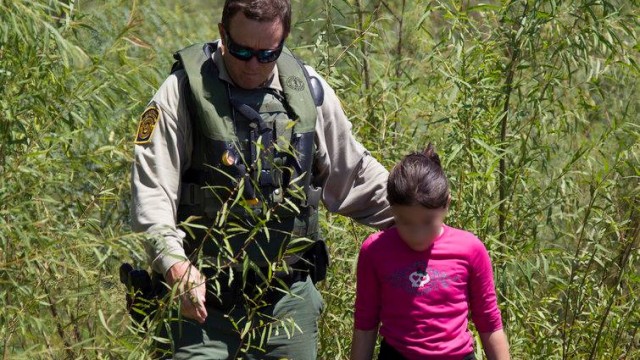
Failing to plan is planning to fail.
Take the Central American refugee surge.
As an asylum and refugee lawyer, I noticed the youth refugee situation unfolding as far back as 2009.
Like most folks, I was surprised by the sharp increase of new arrivals last summer. But I was not shocked by the appearance of young children at our door steps.
I still recall one of my first interviews with a child refugee. He was a frail-looking, thin young man who had fled Guatemala to help his family by earning money in the United States. He was 14 years old.
We met at my Escondido immigration law office. He was accompanied by a friend of his father. His father lived in Guatemala. He had asked his friend, who lived in San Marcos, to help his son out if he made it across the border.
The young man spoke no English. He could not comprehend our complicated legal system.
He was hindered, first and foremost, by his limited education. He only finished up to the sixth grade in his home country.
His uncle did not want to spend for attorney services. Overall, it seemed his commitment to helping the young man was lukewarm at best.
A Predictable Crisis: The Influx Of
Central American Refugees
As the months went by, I met more kids from Central America in similar situations.
The trend was obvious.
And not simply to me. For years, various experts had tried to warn the administration to take a closer look at the political and economic situation in El Salvador, Honduras, and Guatemala.
Hence, when the summer of 2014 rolled around, the administration should not have appeared clueless and taken off guard.
For instance, as noted in Ex-Immigration Official: Children Facing Deportation Deserve Lawyers, Julie Myers Wood, the former head of the U.S. Immigration and Customs Enforcement, had forcasted various problems that would occur unless immigrant children facing deportation were furnished with a lawyer to represent them.
“There are no public defenders in our immigration system. Immigrants facing deportation must find and pay for their own lawyers to make their case before an immigration judge and counter a U.S. government attorney arguing for their deportation — regardless of their age.”
Wood added, this outcome would place the unaccompanied immigrant children in a tough spot. Although they are fleeing violence, extreme poverty, abuse or abandonment, without legal counsel, she predicted most would be sent back into harm’s way.
In some instances, the family had saved money, but the costs of immigrant smugglers depleted their funds.
She stressed the need to set up deportation defense assistance programs. Alas, no actions were taken.
Despite the partisan finger-pointing, both the political right and left are responsible.
Why Understanding The Central American Crisis Roots Are Crucial To Resolution
A report by the American Immigration Council sheds critical insights on the Central American immigration influx.
The report “Understanding The Central American Refugee Crisis: Why They are Fleeing and How U.S. Policies are Failing to Deter Them”, examines why the Administration’s aggressive deterrence strategy towards potential migrants—including a media campaign launched in Central America that highlights risks involved with migration – is not working.
The American Immigration Council report is authored by Jonathan T. Hiskey, Ph.D., Abby Córdova, Ph.D., Diana Orcés, Ph.D. and Mary Fran Malone, Ph.D.
You can find the report here: Understanding The Central American Crisis: Why They Are Fleeing And How U.S. Policies Are Failing To Deter Them
No Solution-Oriented Immigration Plan For Refugee Families In Sight
According to a recent study of the Center For Immigration Studies, over 2,000 immigrant youth per month continue to be taken into custody trying to cross into the United States.
Even though this figure is lower than the numbers last summer, it is higher than at the time of Wood’s article. This means the need for a system of attorney assistance still remains.
Better late than never.
Those in the upper echelon of our government should know that planning is bringing the future into the present so something can be done about it now. In short, acting today helps to shape tomorrow.
The Obama administration missed its chance prior to last summer to think ahead about the Central American refugee influx.
Perhaps worse, no lessons were learned when the refugees arrived. (Unless, of course, doing little to circumvent the influx is the plan.)
At best, a makeshift GPS detention policy was put into effect.
According to the CIS report, just this year, immigrant youth from 27 different countries have been taken into custody.
Approximately 90% are from four Central American countries – Guatemala, El Salvador, Honduras, and Nicaragua. (The others hail from Armenia, the Bahamas, Bangladesh, Brazil, Canada, Chile, China, Colombia, Cuba, Ecuador, Ghana, Haiti, India, Mexico, Nepal, Nigeria, Peru, Romania, Somalia, South Africa, Spain, the United Kingdom, and Vietnam.)
Shaping a workable, solution-oriented plan, given these statistics, seems plausible.
Yet, the government still lacks – and does not appear to be developing – a cohesive plan for addressing the asylum claims of new arrivals. As a result, logistical and legal problems related to balancing due process protections and law enforcement needs are not likely to diminish in coming months.
Failing to plan, after all, is planning to fail.
By Carlos Batara, Immigration Law, Policy, And Politics




